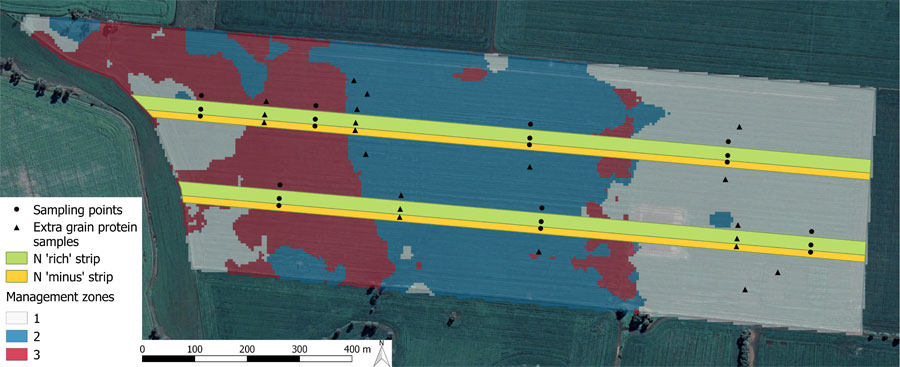Machine learning can turn complex datasets into effective nitrogen fertiliser decisions.
Key points
- Nitrogen decision-making is based on imperfect models fed by imperfect data
- Research has found that machine learning can use multivariate data coupled with simple on-farm experiments to reduce the level of risk inherent in fertiliser decisions
- GRDC has established a follow-on investment that will work with commercial partner/s to develop the science into user-friendly products for applications on-farm
A 2017 grower survey found that most growers used their own calculations or agronomist advice to determine fertiliser rates. Only one-quarter of respondents used nitrogen fertiliser decision-support tools and these growers mostly consulted two or more tools.
The recent proliferation of on-farm sensors and remote-sensing data has potential to collect useful data, but it is challenging for growers and advisers to evaluate multiple sources of data.
GRDC’s investment in the Future Farm project sought to explore ways of automating complex data processing and analysis steps and increasing grower confidence in nitrogen decision-making.
The project was led by CSIRO Agriculture and Food alongside experts from the universities of Sydney and Southern Queensland, Queensland University of Technology and Agriculture Victoria.
With the survey as a guide to decision-making approaches, the next step was to test alternate approaches and to explore the potential to automate the entire process from data acquisition to fertiliser recommendation and application.
Learning from data
Large-scale field trials across Australia compared a range of approaches to nitrogen fertiliser recommendations including traditional models, sensor-based tools and machine learning.
While the four-year GRDC investment was not a nitrogen project per se, the complexity of mid-season nitrogen fertiliser decision-making and the imperfect nature of the input data made it the ideal test case for this approach.
The results from large-scale core field sites and grower-initiated trials across Australia demonstrated that a machine learning model can make effective nitrogen fertiliser recommendations, with considerably reduced error compared to more-conventional methods.
A critical element of success was the use of simple on-farm trial strips that enabled the model to calibrate the data it received (Figure 1). These consisted of the two extremes of nitrogen-rich and nitrogen-zero test strips within a standard nitrogen regime.
Figure 1: Nitrogen-rich and nitrogen-poor test strips were established within a standard nitrogen regime at core field sites across Australia. The two extremes enabled the machine-learning model to calibrate the data it received.

Source: Dr André Colaço, CSIRO Agriculture and Food
Rather than trying to determine which sensors and data inputs would be the most useful based on agronomic knowledge, the team developed a workflow that leveraged precision ag data, satellite imagery, and lots of other useful (and scalable) data inputs against the explanatory power of large-scale on-farm experiments enabled by variable-rate technology.
This data-driven machine learning model was able to improve profits by about $50 per hectare, even for the top-performing grower collaborators.
The future of decisions
A challenge with traditional decision-support tools is that they rely on a mechanistic agronomic model to estimate nitrogen requirements from known or estimated data. Accurate input data – such as soil nitrogen tests – can be expensive and difficult to gather.
Each source of data brings its own level of error to the calculations. Current mechanistic nitrogen decision-support systems have an error of about 50 kilograms of nitrogen/ha. The machine learning model was able to reduce this to about 15kg/ha, demonstrating its potential to enhance grower confidence in the nitrogen decision.
GRDC and CSIRO have recently established a technology transfer investment that will work with commercial partner/s to develop the validated model into user-friendly products and services.
This approach highlights the power of machine learning in agriculture and the importance of precision agriculture fundamentals – namely yield mapping and variable rate technology – in enabling new value for growers in the digital age.
More information: Dr Rob Bramley, 08 8303 8594, rob.bramley@csiro.au , GRDC Update paper Better targeted, more precise fertiliser decisions as a counter to rising fertiliser prices – focusing on 3 of the 6 Rs

























































